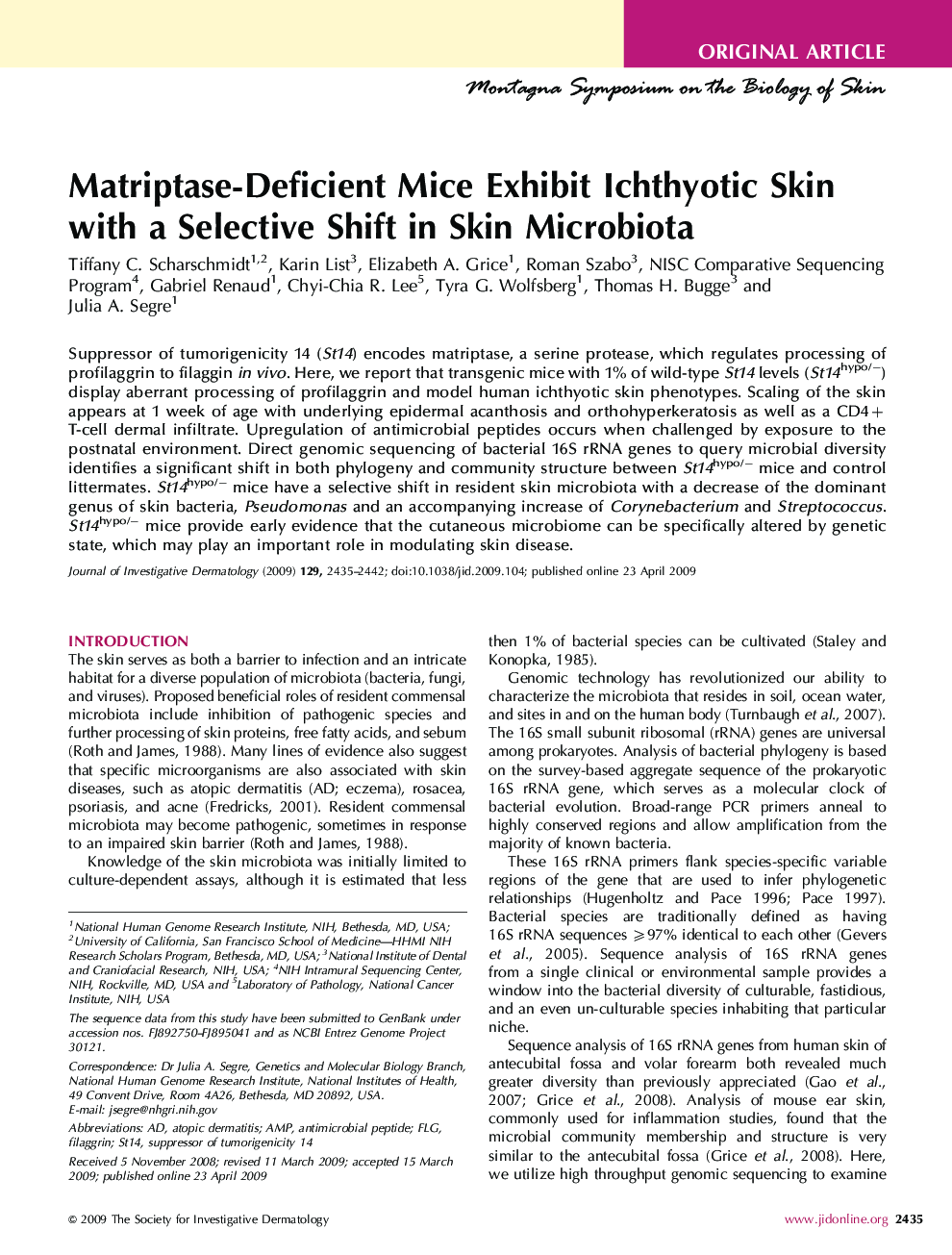| Article ID | Journal | Published Year | Pages | File Type |
|---|---|---|---|---|
| 3216306 | Journal of Investigative Dermatology | 2009 | 8 Pages |
Suppressor of tumorigenicity 14 (St14) encodes matriptase, a serine protease, which regulates processing of profilaggrin to filaggin in vivo. Here, we report that transgenic mice with 1% of wild-type St14 levels (St14hypo/-) display aberrant processing of profilaggrin and model human ichthyotic skin phenotypes. Scaling of the skin appears at 1 week of age with underlying epidermal acanthosis and orthohyperkeratosis as well as a CD4+ T-cell dermal infiltrate. Upregulation of antimicrobial peptides occurs when challenged by exposure to the postnatal environment. Direct genomic sequencing of bacterial 16S rRNA genes to query microbial diversity identifies a significant shift in both phylogeny and community structure between St14hypo/- mice and control littermates. St14hypo/- mice have a selective shift in resident skin microbiota with a decrease of the dominant genus of skin bacteria, Pseudomonas and an accompanying increase of Corynebacterium and Streptococcus. St14hypo/- mice provide early evidence that the cutaneous microbiome can be specifically altered by genetic state, which may play an important role in modulating skin disease.
